A while ago, I wrote here about Largo di Torre Argentina, focusing on the charming colony of cats that has long made its home beside these ancient ruins. However, this place deserves to be remembered again—after all, it’s always a pleasure to wander among the remains of temples and history, particularly in a spot tied to one of Rome’s most infamous moments: the assassination of Julius Caesar.
Largo di Torre Argentina is home to four Republican-era temples, dating back to the 3rd and 2nd centuries BCE. Each of these structures, simply labeled Temples A, B, C, and D, has its own fascinating story. Temple A, for instance, is thought to be dedicated to Juturna, the goddess of springs, while Temple B, a circular masterpiece, was built in honor of Fortuna Huiusce Diei, the goddess of fortune. Temple C, the oldest of the four, may have been dedicated to Feronia, a goddess associated with fertility and abundance, and Temple D, the largest, is likely linked to Lares Permarini, protectors of sailors.
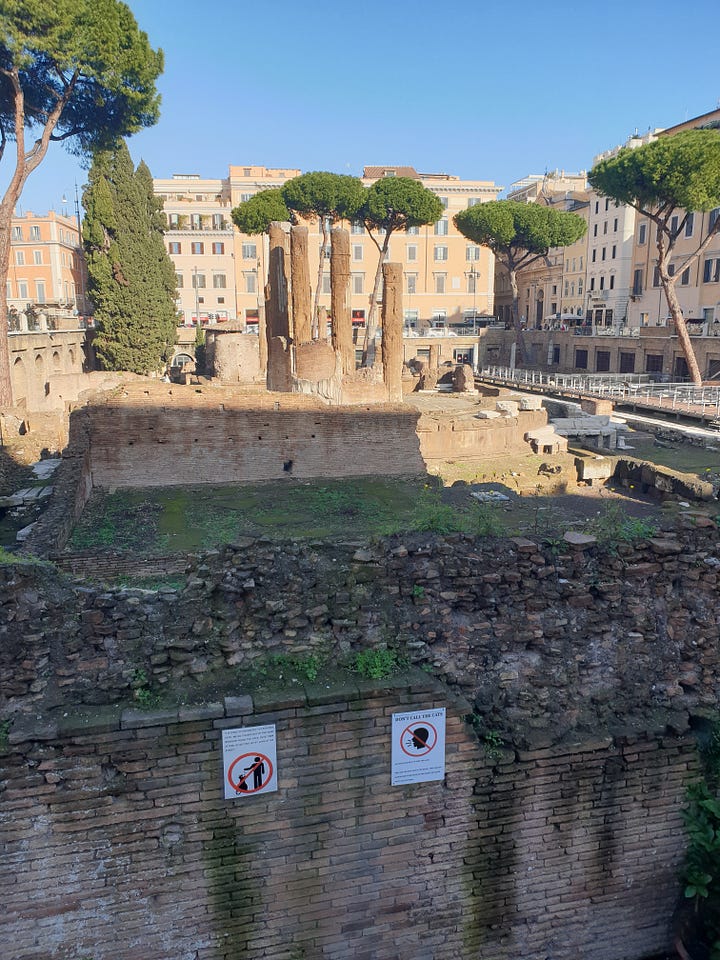
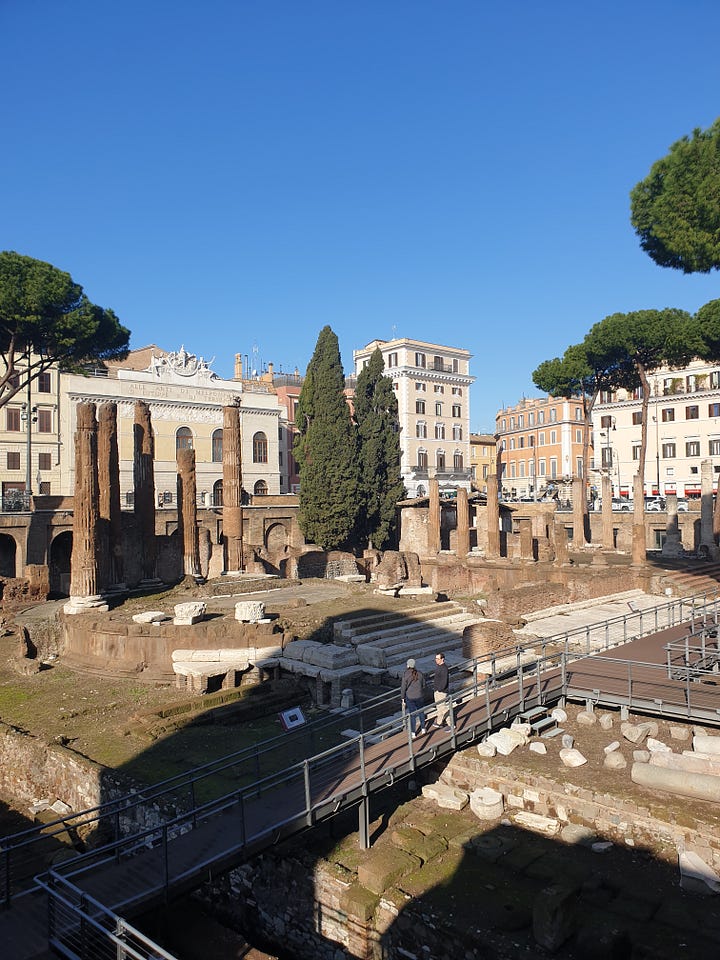
Beyond the temples, this site holds a darker piece of Roman history. It was here, near the steps of the Curia of Pompey, that Julius Caesar met his fate on the Ides of March in 44 BCE. The Curia, once a meeting place for the Senate, became the backdrop to one of history’s most famous political betrayals, where Caesar was ambushed and stabbed by a group of conspirators led by Brutus and Cassius.
Walking along the modern pathways that embrace these ruins, you can feel the weight of history in every step. The recently added walkway not only lets you hover above the archaeological site but also leads you inside it, offering a closer look at the heart of this captivating location. Here, sheltered from the bustle of the city, you’ll find carefully preserved artifacts that tell the story of Rome's glorious and tumultuous past.
The juxtaposition of ancient and modern is striking. Surrounded by the busy streets of Rome, Largo di Torre Argentina stands as a silent reminder of a time when the city was at the height of its power. The temple remains, though weathered, still hold their elegance, and the steps leading to the Curia of Pompey whisper stories of ambition, conspiracy, and betrayal.

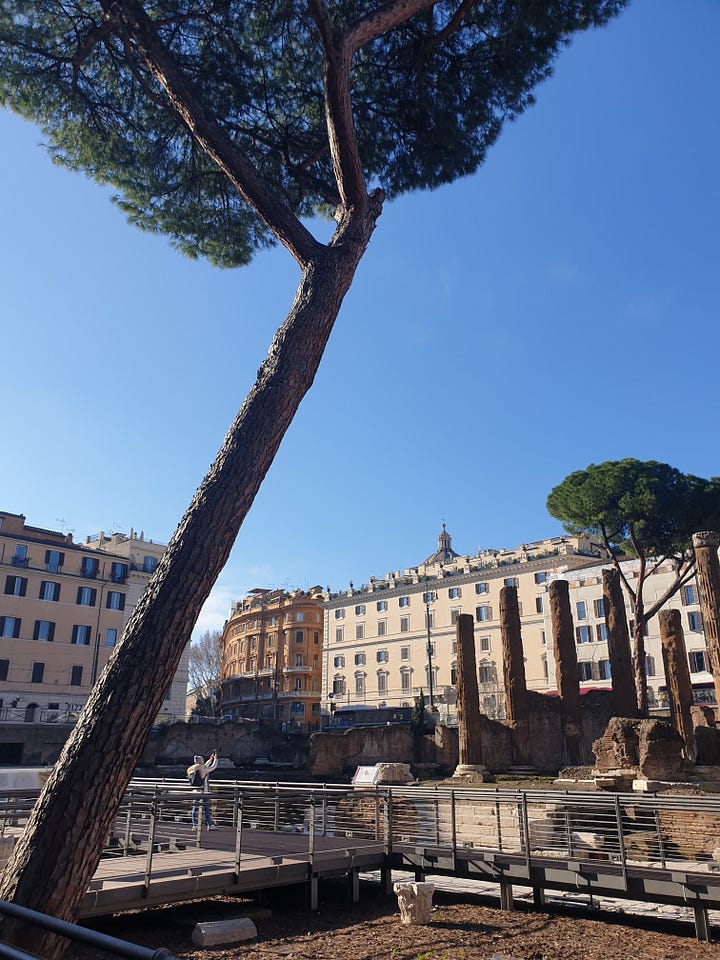
If you’ve already visited before, now is the perfect time to return. The new access points create an entirely fresh perspective on this historical gem, making it an unmissable stop for any curious traveler. And who knows? You might still spot a few of the resident cats, lounging in the sun, as if they, too, are guardians of Rome’s ancient secrets.
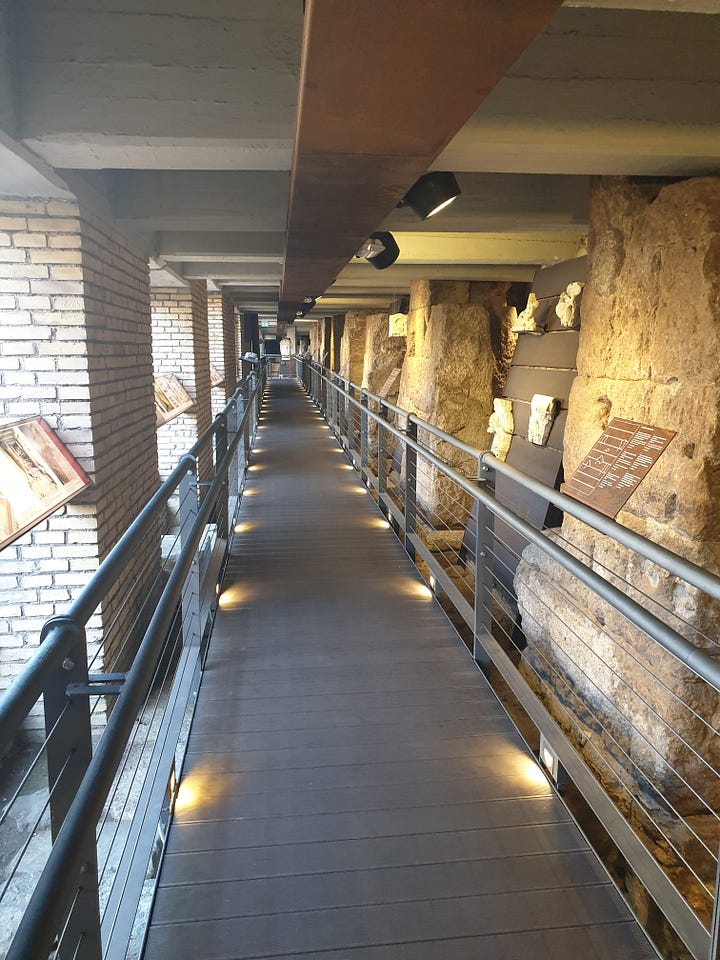

Largo di Torre Argentina is located in the heart of the City, near the bustling Campo de' Fiori and Piazza Venezia. It’s easily accessible on foot from many iconic landmarks, making it a convenient stop during your exploration of Rome.
Come for the history, stay for the atmosphere—and let Largo di Torre Argentina remind you why Rome is the Eternal City.
As always, if you want to use any of the photos from my visit, please remember to give credit to the author. Happy exploring!

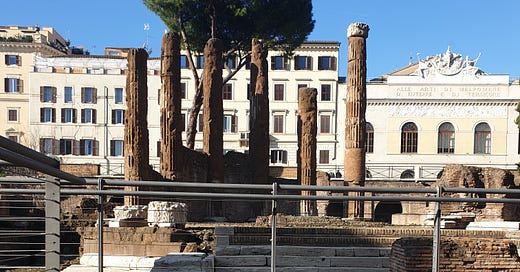



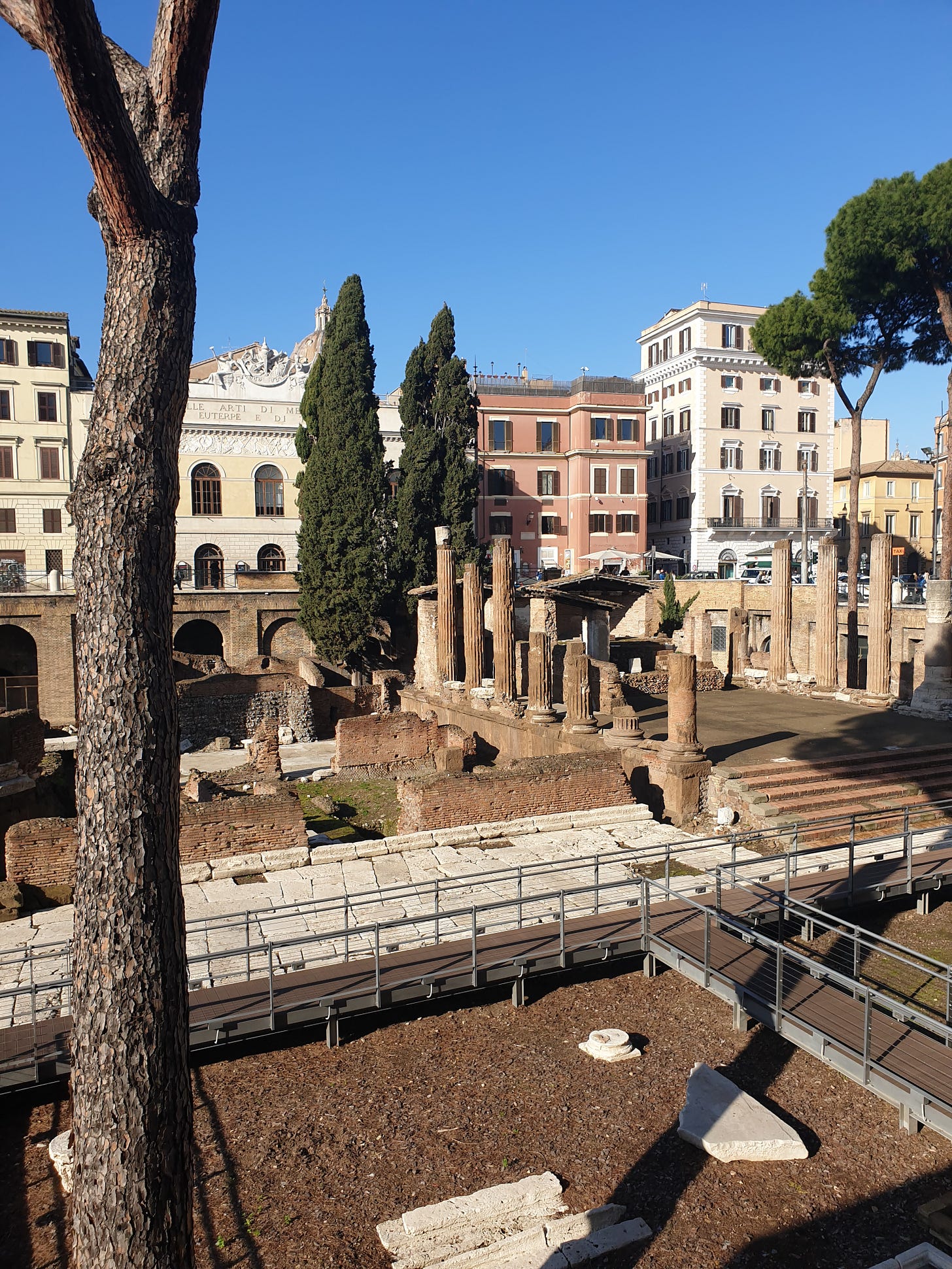
Some how I've managed to completely miss this part of Rome on our previous visits. I'll be making a note to go back here next time.
We found this during our last visit ... purely by accident as we were doing our thing: discovery by just walking around. It is a marvelous site made even better by the many cats lazing around. If you go, you can go down a level and make a donation to support the felines. But to stumble upon this whole city block with a subterranean historical site was mind-blowing!